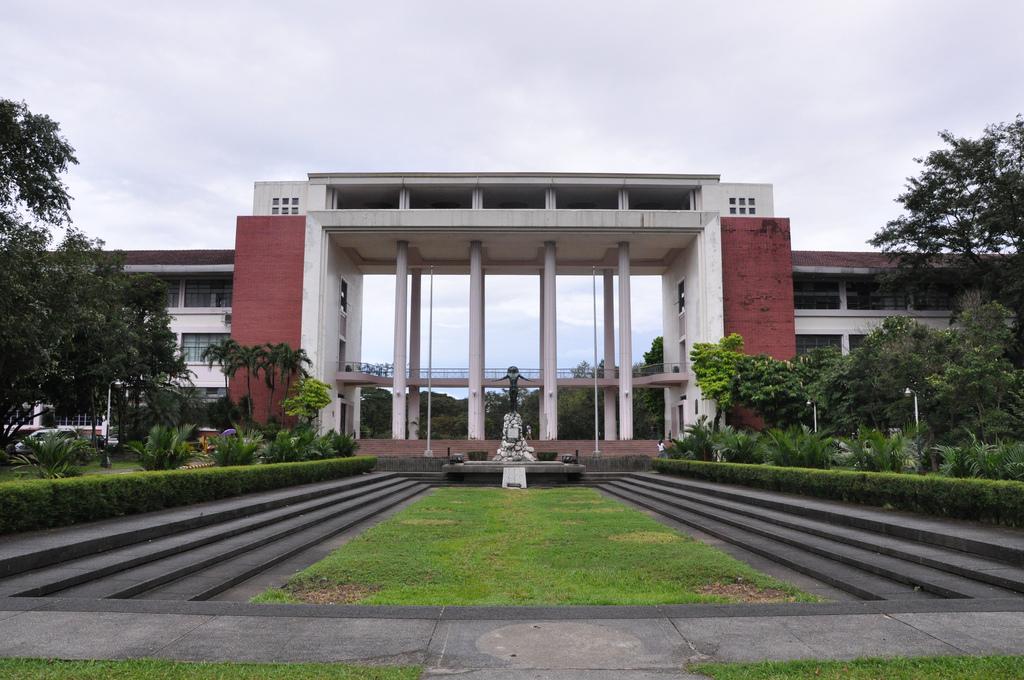
UP Diliman Oblation Plaza
Overview
The University of the Philippines Diliman (commonly referred to as U.P. Diliman, or U.P.D., or informally, Peyups), is a coeducational and public research university located in Quezon City, Philippines. It is the flagship campus, seat of administration, and the fourth oldest constituent university of the University of the Philippines System.
In 1948, the newly established Republic of the Philippines sited an area now known as Quezon City as the nation's capital. The following year, the university acquired a 493-hectare area in the Diliman district of the city, which was assigned as the university’s main campus and seat of administration.
U.P.D. was formally established as a constituent university on April 23, 1985 at the 976th Meeting of the U.P. Board of Regents.
U.P.D. is the biggest in terms of number of degree-granting academic units, student population, faculty, and library resources.
The campus occupies 493 hectares of gently rolling terrain. There are 25 degree-granting units on campus, accounting for 23,385 students. Of this number, 17,789 are undergraduates.
In addition to the units in the main campus, U.P.D. has extension programs in Pampanga and Olongapo City. In the Academic Year 2011-2012, U.P.D. offered academic programs in 244 major fields. There were 127 programs at the undergraduate level, 144 at the master’s level and 55 at the doctoral level.
As of August 2011, U.P.D. had a complement of 1,539 full-time faculty, of whom 36 percent have doctoral degrees. Of the total, 302 are Professors, 293 are Associate Professors, 506 are Assistant Professors, four are Research Professors and 434 are instructors.
The library resources of U.P.D. are the largest in the country. The total book and non-book collections number 1,170,723 volumes, which include books, pamphlets, bound periodicals, theses, dissertations, microforms and various multimedia titles. The serial collection totals 60,450 divided into 26,679 print titles and 33,771 unique titles in online journals. This collection has steadily grown through acquisitions and generous donations.
The Commission on Higher Education declared nine (9) U.P.D. units as Centers of Excellence as of 2009, currently the highest recognized by this agency.
Between the '70s and '80s, U.P.D. was the site of much student activism. It was during these times that student demonstration and opposition against Marcos' administration became heavy and aggressive. This was one of the precursors to Marcos' declaration of martial law in 1972.
Notable research units of U.P.D. include: the Marine Science Institute (MSI), the National Institute of Geological Sciences (NIGS), the National Institute of Physics (NIP), the National Institute of Molecular Biology and Biotechnology-Diliman (NIMBB-Diliman), and the National Institute for Science and Mathematics Education Development (NISMED), which are all pioneers of scientific research and development in the Philippines.
Its athletic teams, collectively called the Fighting Maroons, are members of the University Athletic Association of the Philippines (UAAP), while its cheerdance group, the U.P. Pep Squad, represents the university in its annual UAAP Cheerdance Competition.

Carillon Tower
Campus
U.P. Diliman has a total land area of 493 hectares (1,220 acres). Much of this property is utilized by the university in the form of building infrastructures and research facilities, while the remaining area is forested, reserved for development and residential use, or unoccupied.
The main campus, the science and technology parks located on the eastern and western sides of the university, and the residential (Area 2) and Barangay U.P. Campus communities stretching from the western side to the northern tip of the university comprise the areas most actively used by U.P.D.
Infrastructure development has been ongoing on campus in the last three years as part of two major programs: the National Science Complex (NSC) and the Engineering Research and Technology Development (ERDT) Consortium.
In a bid to boost initiatives in the sciences and technology, former Philippine President Gloria Macapagal Arroyo established the NSC through Executive Order 583 on 8 December 2006 to be administered and operated by the College of Science. Some ?2 billion was allocated to the program to increase research and technological capacity in the country. Of the said amount, ?1.7 billion was earmarked for the construction of the NSC; in particular, the completion of the buildings for the National Institute of Physics and the Institute of Mathematics. It also funded the construction of buildings for the Institute of Chemistry, the Institute of Biology, the National Institute of Molecular Biology and Biotechnology, the Institute of Environmental Science and Meteorology and the College of Science Administration buildings.
The ERDT, on the other hand, is a 10-year program that seeks, among others, to attain “a critical mass of MS and PhD graduates in engineering; upgrade the qualifications of practicing engineers; provide accessible graduate education; upgrade engineering colleges; and develop a culture of research & development.”
The ERDT is implemented by a consortium of seven (7) universities in the country offering Master’s and Doctoral degrees in the various engineering fields. As part of the program, funds have been allocated for the construction of the following buildings for the units under the U.P.D. College of Engineering, namely: Electrical and Electronics Engineering Institute, Institute of Civil Engineering; Mining, Metallurgical and Materials Engineering, Industrial Engineer/Mechanical Engineering, and Energy and Environmental Engineering.

UP Diliman Oblation Statue










